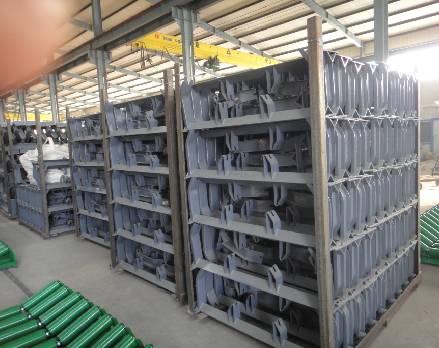 Afrikaans
Afrikaans  Albanian
Albanian  Amharic
Amharic  Arabic
Arabic  Armenian
Armenian  Azerbaijani
Azerbaijani  Basque
Basque  Belarusian
Belarusian  Bengali
Bengali  Bosnian
Bosnian  Bulgarian
Bulgarian  Catalan
Catalan  Cebuano
Cebuano  Corsican
Corsican  Croatian
Croatian  Czech
Czech  Danish
Danish  Dutch
Dutch  English
English  Esperanto
Esperanto  Estonian
Estonian  Finnish
Finnish  French
French  Frisian
Frisian  Galician
Galician  Georgian
Georgian  German
German  Greek
Greek  Gujarati
Gujarati  Haitian Creole
Haitian Creole  hausa
hausa  hawaiian
hawaiian  Hebrew
Hebrew  Hindi
Hindi  Miao
Miao  Hungarian
Hungarian  Icelandic
Icelandic  igbo
igbo  Indonesian
Indonesian  irish
irish  Italian
Italian  Japanese
Japanese  Javanese
Javanese  Kannada
Kannada  kazakh
kazakh  Khmer
Khmer  Rwandese
Rwandese  Korean
Korean  Kurdish
Kurdish  Kyrgyz
Kyrgyz  Lao
Lao  Latin
Latin  Latvian
Latvian  Lithuanian
Lithuanian  Luxembourgish
Luxembourgish  Macedonian
Macedonian  Malgashi
Malgashi  Malay
Malay  Malayalam
Malayalam  Maltese
Maltese  Maori
Maori  Marathi
Marathi  Mongolian
Mongolian  Myanmar
Myanmar  Nepali
Nepali  Norwegian
Norwegian  Norwegian
Norwegian  Occitan
Occitan  Pashto
Pashto  Persian
Persian  Polish
Polish  Portuguese
Portuguese  Punjabi
Punjabi  Romanian
Romanian  Russian
Russian  Samoan
Samoan  Scottish Gaelic
Scottish Gaelic  Serbian
Serbian  Sesotho
Sesotho  Shona
Shona  Sindhi
Sindhi  Sinhala
Sinhala  Slovak
Slovak  Slovenian
Slovenian  Somali
Somali  Spanish
Spanish  Sundanese
Sundanese  Swahili
Swahili  Swedish
Swedish  Tagalog
Tagalog  Tajik
Tajik  Tamil
Tamil  Tatar
Tatar  Telugu
Telugu  Thai
Thai  Turkish
Turkish  Turkmen
Turkmen  Ukrainian
Ukrainian  Urdu
Urdu  Uighur
Uighur  Uzbek
Uzbek  Vietnamese
Vietnamese  Welsh
Welsh  Bantu
Bantu  Yiddish
Yiddish  Yoruba
Yoruba  Zulu
Zulu Exploring the Functionality and Importance of Drive Pulleys in Mechanical Systems and Applications
Drive Pulley An Essential Component in Mechanical Systems
Drive pulleys are integral components in various mechanical systems, playing a vital role in the transmission of power and motion. They are widely used in a range of applications, from industrial machinery and automotive engines to household appliances. Understanding the function and significance of drive pulleys can provide valuable insights into their crucial role in engineering and technology.
At its core, a drive pulley is a wheel with a groove around its circumference, designed to hold a belt or a rope. When the pulley rotates, it transfers energy from one component to another, effectively converting rotational motion into linear motion or vice versa. This functionality makes it a key player in belt drive systems, where power is transmitted from a driving shaft to an output shaft via a belt.
Drive pulleys come in various types and sizes, tailored for specific applications. The most common types include flat pulleys, V-belt pulleys, and timing pulleys. Flat pulleys are designed for flat belts and are often used in simpler machines. V-belt pulleys feature a V-shaped groove, which helps in gripping the belt more securely, minimizing slippage—a feature that is particularly beneficial in applications requiring high torque, like in automotive engines. Timing pulleys, on the other hand, have teeth that mesh with the belt’s corresponding teeth, allowing for precise timing and positioning, making them essential in applications like 3D printers and CNC machines.
drive pulley

One of the key advantages of using drive pulleys is their ability to increase efficiency in power transmission
. By converting rotational motion effectively, they minimize energy losses that can occur due to friction or slippage. This efficiency is critical in industries where energy conservation is paramount, as it directly impacts operational costs and sustainability.Moreover, drive pulleys can be configured to achieve various speed and torque outputs. By changing the diameter of the pulleys in a pulley system, engineers can design systems that either increase speed (using a smaller drive pulley connected to a larger follower pulley) or increase torque (using a larger drive pulley connected to a smaller follower pulley). This versatility makes drive pulleys a fundamental design element in machinery, allowing for tailored solutions that meet specific operational requirements.
Maintenance of drive pulleys is also essential for optimal performance. Regular inspection for wear and tear, alignment checks, and lubrication of bearings are crucial steps in ensuring longevity and efficiency. A malfunctioning pulley can lead to increased friction, greater energy consumption, and potential system failures, underscoring the importance of proper maintenance practices.
In conclusion, drive pulleys are a critical element in mechanical systems, providing a reliable and efficient means of power transmission. Their various types and configurations allow for versatility in design and function, making them indispensable in a multitude of applications. As technology continues to advance, the role of drive pulleys will likely evolve, with innovations leading to even more efficient and effective solutions in the engineering realm. Understanding their significance not only enhances our appreciation of mechanical systems but also informs better design and maintenance practices in an ever-evolving technological landscape.
-
Revolutionizing Conveyor Reliability with Advanced Rubber Lagging PulleysNewsJul.22,2025
-
Powering Precision and Durability with Expert Manufacturers of Conveyor ComponentsNewsJul.22,2025
-
Optimizing Conveyor Systems with Advanced Conveyor AccessoriesNewsJul.22,2025
-
Maximize Conveyor Efficiency with Quality Conveyor Idler PulleysNewsJul.22,2025
-
Future-Proof Your Conveyor System with High-Performance Polyurethane RollerNewsJul.22,2025
-
Driving Efficiency Forward with Quality Idlers and RollersNewsJul.22,2025





























